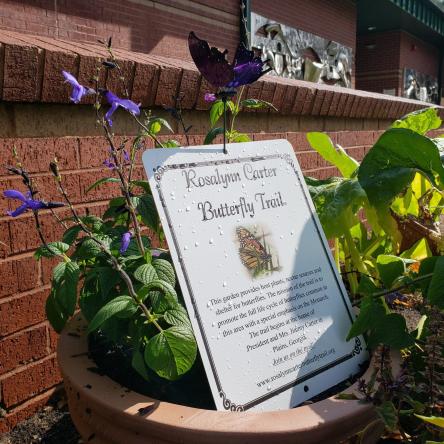Looking for your next read? Check out In the Weeds by Tom Vitale, reviewed by Fulco Library staff, Kay C.
Picture Book Review: The Maggie B. by Irene Haas
By fulcolibrary
Looking for your next read? Check out The Maggie B. by Irene Haas, reviewed by Fulco Library staff, Anne A.
Labor Day Listens
This Labor Day, listen to American Folk music on Freegal, or liven up your family road trip by downloading a Disney Soundtrack from hoopla. Explore the library's eMusic collection both in our catalog and on our electronic resource platforms.
Adams Park Library Joins the Rosalynn Carter Butterfly Pollinator Garden Trail
The Adams Park Library is officially on the map! Garden #264 on the Rosalynn Carter Butterfly Pollinator Garden Trail to be exact. This July, Georgia Public Lib
Book Review: Code Name Hélène by Ariel Lawhon
By fulcolibrary
Looking for your next read? Check out Code Name Hélène by Ariel Lawhon, reviewed by Fulco Library staff, Yuliya H.
Picture Book Review: We Don’t Eat Our Classmates by Ryan T. Higgins
By fulcolibrary
Looking for your next read? Check out We Don't Eat Our Classmates by Ryan T. Higgins, reviewed by Fulco Library staff, Kate L.
READCamp with Malcolm Mitchell
FulcoLibrary is pleased to share a new partnership with Super Bowl Champion and Author Malcolm Mitchell! As children prepare to get back into the (reading) gro
What To Read Before DragonCon 2022
Check out our lists of works by visiting authors and read all the hottest science fiction and fantasy of the past year in the run up to DragonCon 2022! Which books will you choose for Atlanta's annual Dragon Awards, highlighting the best in entertainment for the last year?
Congrats on a great Summer!
Thank you for a superb Summer Reading 2022! Curious to see how many books we read together?- Total number of books read: 62,681
Book Review: The Madman’s Library by Edward Brooke-Hitching
By fulcolibrary
Looking for your next read? Check out The Madman's Library by Edward Brooke-Hitching, reviewed by Fulco Library staff, Meredith L.
1 - 10 of 15
- Go to page 1
- Go to page 2
- Next page










